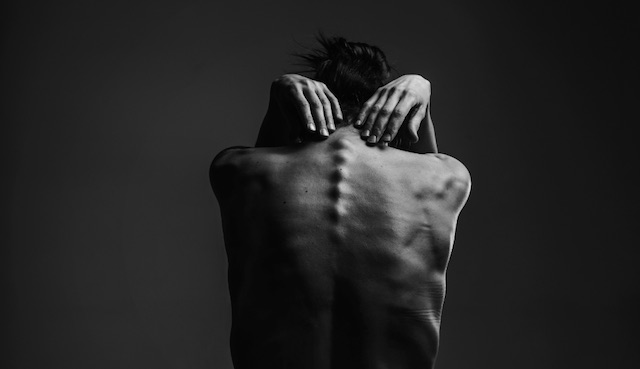The instructor stood before me with a very large canister of pepper spray: “As part of this certification, you will get sprayed in the eyes with pepper spray so you learn.”
Learn? Learn what? How difficult it is to stand there while the burn of a thousand habanero chillies assault your eyes?!
So I asked, “Learn what, sir?”
He blasted the pepper spray into my eyes and with the pain, burning, stinging, and difficulty breathing, I learned. I learned compassion.
Many years later, I realized the relationship between pain and compassion. Our capacity for compassion is directly related to our capacity for pain. If we cannot, or do not, allow ourselves to feel pain, physical or emotional, we cannot grow our compassion.
Likewise, our capacity for joy is related to our capacity for sadness. When we let ourselves feel sadness, we are, at the same time, increasing our capacity to feel joy.
In both instances, we broaden the spectrum of emotions we can feel, both “bad” and “good.”
The deeper realization is that there can be tremendous personal growth through being mindfully present with our pain.
I have the honor of teaching yoga and mindful resilience meditation to combat veterans suffering from Post Traumatic Stress Disorder (PTSD) and chronic pain. Most of my students have significant, life-long, painful injuries from combat. Their chronic pain is real, often debilitating.
I am a veteran. I’ve been shot, blown up, had broken bones and dislocated joints, and more stitches than I can count. I’ve had three surgeries on my right wrist, one on my right hand and left knee. I’m missing three inches of my eighth rib, and the right side of my rib cage is held together with a Gortex patch. Chronic pain—I get it.
What it took me years to “get” is that I am not my pain. I have a choice. My pain can define me, or I can define my pain.
This awareness can change everything.
The beginning of this profound realization is that pain and suffering are mutually exclusive. Physical pain is the actual sensations in our body, neurological and chemical messages sent to the brain. Suffering is how we feel about those sensations, our internal dialogue.
Example: You wake up at 3:00 a.m. to pee. You get out of bed walk toward the bathroom and, crack! The corner of the coffee table cuts deeply into your shin. Sh*t! It hurts like hell! Then you think, damn it, I should have turned the light on. Crap, now I won’t be able to sleep with this pain. I will be exhausted tomorrow. I’m going to have to cancel morning yoga with Monica. Why didn’t I turn on the damn light?!
The “crack” and the physical sensations that travelled from your leg up to your brain is pain. Everything that happened in your mind afterward is suffering.
Our problem is that the relationship between pain and suffering is developed early in life. This pain-suffering link becomes a filter through which we ultimately experience most pain in our lives. We feel physical pain, and along with it we suffer.
The truth is, pain and suffering are not inherently linked. We can change our relationship to our pain so we don’t suffer.
Example: You go to the gym and have a killer legs-day doing squats and leg presses. The next day you are sore as hell, it hurts (pain) just to walk down stairs. But, you feel great! No suffering. Because you have a different relationship to that pain, that pain is “good” pain.
Pain is real. Suffering is a decision. Decide differently.
We can learn, re-train our brains and disconnect the pain-suffering link through yoga, mindfulness and meditation.
“Let this, the dissolution of the union with pain, be known as yoga.” ~ Bhagavad Gita, Chapter 6, verse 23
The first step takes courage. We have to acknowledge our pain, invite it in for coffee. Sit with it. Feel it. Experience the physical sensations of the pain, without judgment, as if our pain were the coffee in front of us. Is it hot? Is it burning? Is it sharp? Does it radiate? Where does it start? Where does it end? What color would this pain be? Does it change from moment to moment?
Pain is a physical sensation—usually not one we prefer, like, or want. When we invite it in, sit with it, it will suck. We don’t have to like it. We can be angry at it, and we probably will be at first. This is being present with it and acknowledging it as a physical sensation in our body in the moment.
Ultimately we want to change our internal dialogue from “I’m in pain” to “I am aware of the sensation of pain.” The first is you believing your pain is you. The latter, the realization you are so much more than your pain.
Our brains on pain are very predictable, and it helps to have a basic understanding of how our bodies and brains sense and process pain. The regions of the brain that regulate pain are the same regions involved in our stress response. When we feel pain, our bodies activate our “fight or flight” (stress) response. The stress response can increase the sensation of pain. Chronic pain continuously activates our stress response, creating a never-ending loop of pain causes stress, causes pain.
Suffering, our negative feelings about our pain, also activates our stress response and keeps us in the pain-stress loop. Activating our body’s “rest and digest” mode is the neurological and hormonal antidote to our stress response and helps us break free.
Mild exercise, certain yoga poses, breathing techniques, and meditation are practices proven to counteract our stress response. If you suffer from chronic pain, you should explore yoga and mindful meditation techniques from a qualified teacher as means to help cope with and change your relationship to your chronic pain.
A regular yoga practice is more than just poses. It involves breathing techniques that help us relax and inspires self-study of our body and mind.
Summoning the courage to change our relationship to our chronic pain is no easy endeavor. However, it is the path to end the suffering caused by pain. At the end of this path is gratitude. Gratitude for our pain as it helps keep us mindfully present.
The Universe unfolds as it should and can never hurt itself. As part of this Universe this means that our pain exists for a greater cause, to further our own spiritual growth, even to serve others.
Invite your pain in. I dare you. You will be starting along a path of changing your relationship to your pain, a path to realizing while your pain is real, suffering is a decision. Choose not to suffer. Your pain is not You.
“The wound is the place where the light enters you.” ~ Rumi
Author: Brian Cooke
Image: Olenka Kotyk/Unsplash
Editors: Emily Bartran; Renée Picard








Read 10 comments and reply